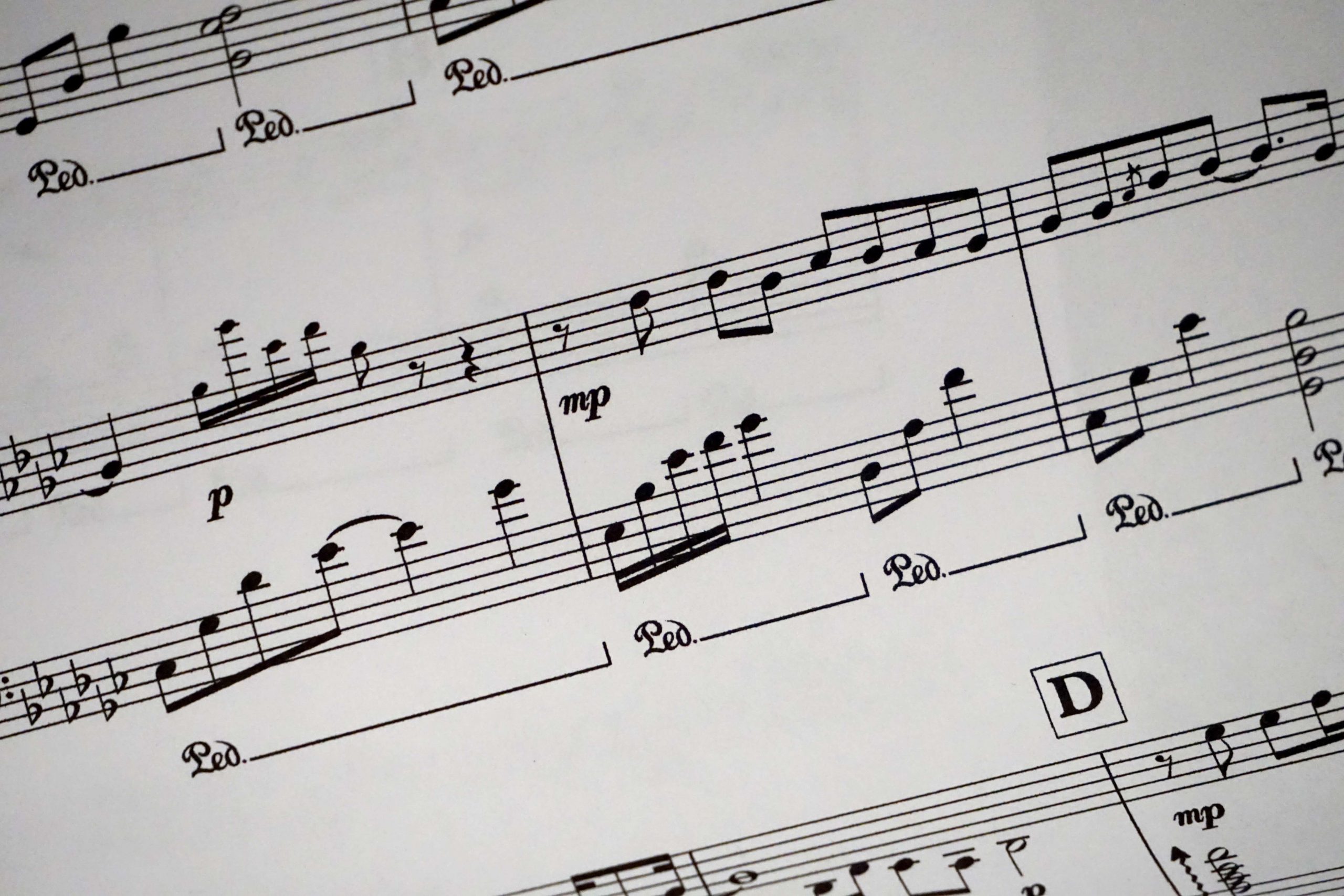Have you ever puzzled the best way to create a new song?
There are so many ways to assemble chord progressions, melodies, and rhythms into elements that type a cohesive construction.
And whereas there isn’t any particular algorithm for writing a song, it sometimes helps to use a component when you want to create a new song.
On this guide, we’ll look at each standard song structure and the way every a part of a song fits within a form.
By the end, you’ll know each sort of song construction and the way the intro, verses, refrain, pre-chorus, bridge, and outro fit within a song’s structure.
5 sorts of song structure
Songs may be structured in a wide range of ways.
With a number of exceptions, you’ll discover that the majority of song structures are defined by the letters A and B denoting different sections.
Otherwise, you’ll see the letters V, C, and B used to signify verse, refrain, and bridge.
For our functions we’ll look at the 5 major song structures you’ll discover throughout all music:
- AABA
- VCVC
- VCVCBC
- Head-Solo-Head
- Linear or Via Composed
Let’s dive in!
1. AABA
In case you’ve ever listened to classic jazz normal, you’ve possibly heard this format.
Many legendary composers like Duke Ellington would have used this early tune structure in their songwriting.
In AABA, each part lasts precisely eight bars.
Each A bit follows an identical chord progression.
The B part will then observe a distinctly different chord progression, up a major or minor third for instance.
Often the B part will use a 2-5-1 chord progression to return to the final A section.
In fact, you don’t need to rigidly observe the eight-bar sample.
It may be good to increase the B part by an additional eight bars to surprise the listener, for instance.
AABA is a superb format to contemplate in case you are writing non-lyrical music, especially jazz.
For instance, check out Take the A Train by Duke Ellington,
2. VCVC
Every time verse and refrain are used in tune structure notation the tune will include lyrics.
VCVC is a very simple songwriting construction that features two refrain sections and two verse part.
We’ll dive into the mechanics of verses and choruses afterward.
For now, just understand that in a VCVC tune construction the refrain sections are the same, whereas the verse one and verse two shall be different from one another lyrically.
Nirvana’s Smells Like Teen Spirit follows a fairly clear VCVC structure, except that the tune goes into a last third repetition of the verse and refrain.
The song also features that well-known pre-chorus part of the place Cobain repeats the word Hello.
3. VCVCBC
The only difference between VCVC and VCVCBC is the bridge that comes between the second and third refrain.
On this tune construction, an added part is used to deliver the tune back to the third refrain and remove a possibly repetitive third verse.
You may additionally see the very related VCVCBV structure utilized in many tracks where instead of ending on the refrain, the tune ends on an added verse part.
In Weezer’s track Say it Aint So you possibly can clearly hear the bridge before the third and last refrain.
4. Head-Solo-Head
This a quite common form found in genres of music that make use of improvisation, especially jazz music.
Often, the head part contains a recognizable melody from a jazz standard that the band will play together.
This melody within the head part follows a chord progression that’s used afterward during the solo part.
The solo part can repeat for a really long time– often lengthy sufficient for every musician to play a solo.
Solo sections in jazz usually culminate with a bombastic drum solo or a period of “trading fours” between each musician and the drummer.
In this case “trading fours” refers to trading solos over 4 bar sections.
Giant Steps by John Coltrane very much follows this tune construction.
5. Linear (through-composed)
Music doesn’t need to observe a repeating construction.
In fact, there’s plenty of nice music that follows no construction in any respect!
We are able to name this type of song structure linear or through-composed.
You’ll discover this construction in numerous classical, ambient, digital, and experimental music.
Zodiac Shit from Flying Lotus is one instance of a tune that doesn’t actually observe any construction at all.
Introducing… your tune!
Now that we’ve appeared on the 5 major song structures, let’s dive into the person elements of a song.
Most songs start off with some sort of introduction that features an instrument as an alternative of a vocal part.
In case you want to create a pop song, take into account that you’ll want to get to the purpose in a short time. Don’t lose the listener with an overextended intro.
Nonetheless, in case your tune doesn’t have to stay to a pop formula, the intro is an effective place to set the tone for what the rest your track is going to deliver.
Writing the verse
Your verse is where the narrative or story behind your lyrics gets developed.
A song must be about something, so your first verse is a superb place to introduce the topic.
It’s up to you whether your verses ought to rhyme or not, but it surely ought to at least have a rhythmic meter that pushes the song alongside.
Typically a verse will last via about eight bars of music.
Warm up the viewers with a pre-chorus
Your viewer is waiting in anticipation for your refrain.
It’s an important and memorable part of your track in any case.
You may play with that anticipation with a brief pre-chorus.
A pre-chorus may be as brief as two bars, but it surely could be so long as your verse part– it’s up to you.
A recognizable build-up or break down within the pre-chorus may be sufficient to excite your listeners that the refrain is coming next.
The refrain is the crux of your song
The refrain part of your song that you really want people to remember.
As a result of it’s repeated after each verse, it needs to be the point of interest of your song.
Lyrically you’ll want to create a song that has a core message in easy and memorable means.
Historically the refrain was supposed to be sung alongside to. Choir and refrain are comparable phrases for a cause.
To make your refrain memorable you need a great vocal hook.
A memorable line of relatable phrases with a simple melody that anybody can sing alongside to is a superb place to begin when writing your vocal hook.
The bridge to somewhere
Realizing when to use a bridge section and what to do with one could be a little bit confusing.
However, generally, you’ll use one in the direction of the end of a song between the final two choruses.
Or sometimes before the last verse if there are three verses.
Figuring out what to put in a bridge is one other question, there are plenty of issues you are able to do with yours.
Some artists use them to construct up towards a last triumphant refrain.
Whereas others will utterly deconstruct and create a new song.
It’s up to you the way you utilize your bridge, simply keep in mind that the goal of the bridge is to take the song again to the refrain.
Essentially, your bridge should take the listener somewhere musically.
Closing with the outro
Ending a song nicely could be a little bit difficult.
You possibly can fade out on a studio jam, finish on an enormous chord, abruptly reduce the tune off, or change the beat utterly.
It’s up to you the way you finish your track, however, ending a song memorably is fairly essential because it’s the last thing anybody listening will hear.
Don’t neglect to put some thought into how the outro wraps up any lyrical or musical elements of your observe too.
Lyrically you could want to finish the story your song is telling if the final verse and refrain doesn’t already to that.
Sonically you’ll need to provide the impression of finality or relying on the tracklisting inside your album, you’ll need the ending to transition properly into the following song.
Song construction is supposed to be broken
As a lot as they’re helpful for organizing your songwriting, don’t really feel as though a song you create has to observe rigid components.
Take the artistic license to interrupt from conventional song constructions whenever you want.
Your songwriting components are only good in case your observe is one thing that you’re pleased with.



